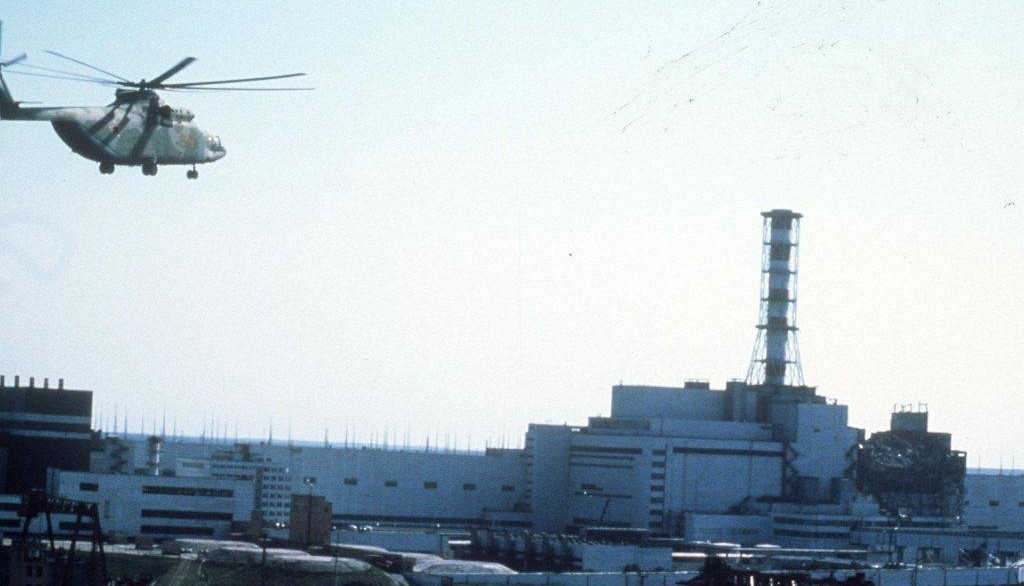Thirty years after the Chernobyl nuclear disaster, Michael Alexander speaks to a Tayside charity volunteer who helped give respite to Belarussian children.
When one of the four reactors at the Chernobyl nuclear power plant in Ukraine exploded on April 26 1986, it was the biggest accident of its kind in history.
Radiation sickness caused by the disaster killed 31 people in the first few months and contaminated millions more.
A combination of operator error and design flaws in the Chernobyl reactor were blamed for the power surge which led to the core’s meltdown.
This led to chemical explosions so powerful that they blew the 1000-tonne cover off the top of the reactor. Eight tonnes of uranium dioxide was released and spread across the surrounding countryside.
Some 27kg of cancer-inducing caesium-137 was released into the atmosphere, and an estimated 150-200 million curies – equivalent to 100 times the radioactivity released from the atomic bombs dropped on Hiroshima and Nagasaki in 1945 – was also released.
https://www.youtube.com/watch?v=day7HsZ8TPA
The worst affected were those living within an immediate radius of the plant. In Ukraine, 3.7 million people were affected by radiation and more than 160,000 inhabitants had to be resettled.
But one of the worst countries affected was neighbouring Belarus. Here, 85% of the radioactive fallout from the meltdown blew across their country, with the remains of this invisible killer eventually finding its way to Britain – leading to decades of restrictions on sheep movements in the Scottish Borders amid concerns over contamination – and circumnavigating the world.
Today, it’s Belarus which continues to suffer some of the worst fallout from the tragedy which initially the former Soviet authorities tried to hush up.
The main consequence continues being thyroid cancers in generations of children who were not even born when disaster struck.
One woman who became something of an authority on the tragedy of Chernobyl is former Angus provost Ruth Leslie Melville.
Established in Angus immediately after the disaster, Bel-Aid initially helped bring small groups of children from the affected areas of Belarus over to Scotland for a holiday. However, with the political regime in Belarus making it increasingly difficult to target the children most in need, the charity folded several years ago.
“The most positive thing to come out of the Chernobyl disaster for me is that my son Robin married a Belarussian woman Olga whom he met through one of the trips, and I now have two grandchildren Nicholas, aged 12 and Jamie aged 10, “ Ruth, now 75, told The Courier.
“When the groups of children came over and stayed with the wonderful host families across Angus for a month, they gained so much. Imagine living somewhere where putting every morsel of food into your mouth put you at risk of contamination? When the children came here they were able to live in a stress free environment for a few weeks, and it was said the experience increased their lives by two years.
“It was heart breaking when we later heard that some had died.”
Ruth, who visited Belarus numerous times, said she was still “haunted” by the highly contaminated exclusion zone – which she had entered – and by the tragedy of rural-dwelling peasant people who had chosen to return to live in the contaminated area.
Cupar woman Anna Beattie has also been involved in giving respite to 14-year-old orphan Yaraslova Naida from Ukraine. Anna first became a volunteer host for the Country Durham-based Crook for Chernobyl charity in 2007.
Anna’s involvement over the years has helped Yaraslova go from being a “tiny and frightened bedraggled six year old” with numerous physical and psychological problems to a healthy, happy and confident child.
However, it’s not all been plain sailing. The Courier told how the wife of a former RAF Leuchars serviceman became embroiled in a visa immigration dispute with the Home Office before Christmas which led to a delay in Yaraslova coming over for a festive trip.
According to UK charities such as the Friends of Chernobyl’s Children and the Chernobyl Children’s Life Line, which have welcomed 10s of thousands of Chernobyl children to the UK for recuperative breaks since the 1990s, the benefits of getting children out of the country remain self-evident.
But the devastating health legacy continues. A new report by independent consultant Dr Ian Fairlie suggests that five million people in Ukraine, Belarus and Russia still live in highly contaminated areas and 400 million people reside in less contaminated areas. Sadly, 40,000 fatal Chernobyl-linked cancers are predicted over the next 50 years.
Meanwhile, a giant cover weighing 31,000 tonnes is currently being constructed to slide over the Chernobyl reactor and encase the radiation. It will replace a crumbling sarcophagus built in the 1980s. Scientists say the Chernobyl area could remain contaminated for up to 20,000 years.


